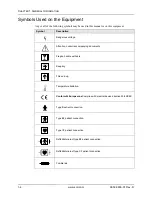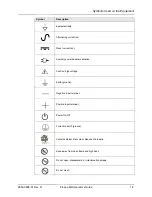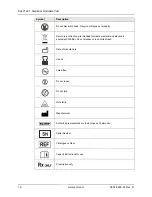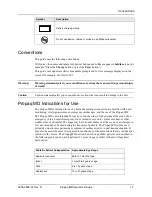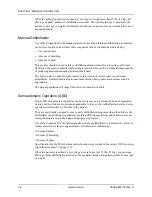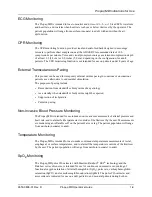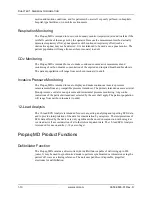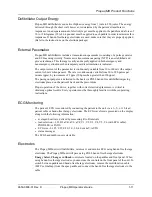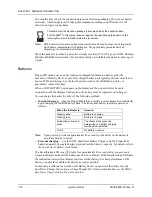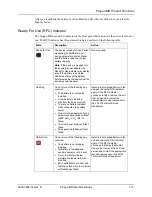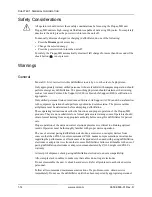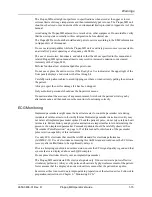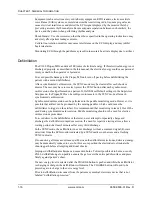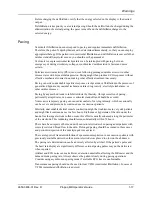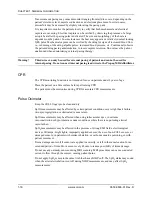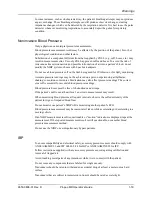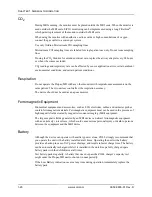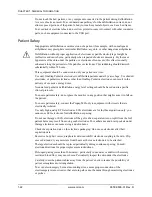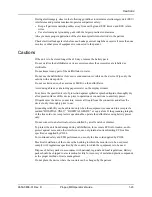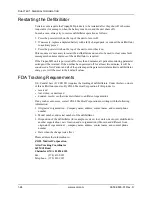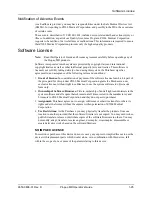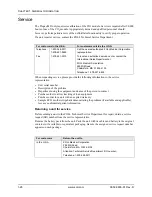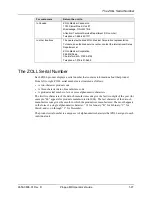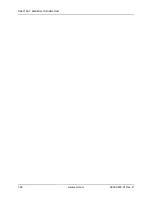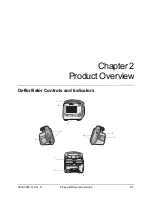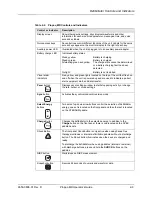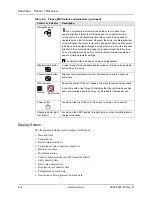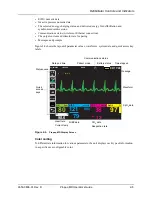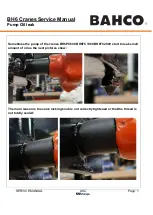
C
HAPTER
1 G
ENERAL
I
NFORMATION
1-18
www.zoll.com
9650-0806-01 Rev. D
Transcutaneous pacing may cause discomfort ranging from mild to severe, depending on the
patient’s tolerance level, muscle contractions and electrode placement. In certain cases,
discomfort may be decreased by slightly relocating the pacing pads.
It is important to monitor the patient closely to verify that both mechanical and electrical
capture are occurring. Electrical capture can be verified by observing the presence of a large
ectopic beat after the pacing pulse is delivered. The size and morphology of the beat are
dependent on the patient. In some instances the beat may appear as a relatively normal looking
QRS pulse. Mechanical capture can be verified by checking for signs of increased blood flow
i.e., reddening of the skin, palpable pulses, increased blood pressure, etc. Continuously observe
the patient during pacing administration, to insure capture retention. Do not leave the patient
unattended when administering external pacing therapy.
Warning!
This device can only be used for external pacing of patients and cannot be used for
internal pacing. Do not connect internal pacing lead wires to the Propaq MD defibrillator.
CPR
The CPR monitoring function is not intended for use on patients under 8 years of age.
Place the patient on a firm surface before performing CPR.
The patient must be motionless during CPR for accurate CPR measurements.
Pulse Oximeter
Keep the ZOLL finger probe clean and dry.
SpO
2
measurements may be affected by certain patient conditions: severe right heart failure,
tricuspid regurgitation or obstructed venous return.
SpO
2
measurements may be affected when using intravascular dyes, in extreme
vasoconstriction or hypovolemia or under conditions where there is no pulsating arterial
vascular bed.
SpO
2
measurements may be affected in the presence of strong EMI fields, electrosurgical
devices, IR lamps, bright lights, improperly applied sensors; the use of non-ZOLL sensors, or
damaged sensors; in patients with smoke inhalation, or carbon monoxide poisoning, or with
patient movement.
Tissue damage can result if sensors are applied incorrectly, or left in the same location for an
extended period of time. Move sensor every 4 hours to reduce possibility of tissue damage.
Do not use any oximetry sensors during MRI scanning. MRI procedures can cause conducted
current to flow through the sensors, causing patient burns.
Do not apply SpO
2
sensor to the same limb that has an NIBP cuff. The SpO
2
alarm may sound
when the arterial circulation is cut off during NIBP measurements, and may affect SpO
2
measurements.
Summary of Contents for Propaq MD
Page 1: ...Propaq MD Operator s Guide 9650 0806 01 Rev D...
Page 40: ...CHAPTER 1 GENERAL INFORMATION 1 28 www zoll com 9650 0806 01 Rev D...
Page 60: ...CHAPTER 2 PRODUCT OVERVIEW 2 20 www zoll com 9650 0806 01 Rev D...
Page 74: ...CHAPTER 4 TRENDS 4 4 www zoll com 9650 0806 01 Rev D...
Page 84: ...CHAPTER 5 ALARMS 5 10 www zoll com 9650 0806 01 Rev D...
Page 94: ...CHAPTER 6 MONITORING ECG 6 10 www zoll com 9650 0806 01 Rev D...
Page 104: ...Chapter 7 Monitoring Respiration Resp and Heart Rate HR 7 10 www zoll com 9650 0806 01 Rev D...
Page 120: ...CHAPTER 8 MONITORING NON INVASIVE BLOOD PRESSURE NIBP 8 16 www zoll com 9650 0806 01 Rev D...
Page 154: ...CHAPTER 11 MONITORING INVASIVE PRESSURES IBP 11 10 www zoll com 9650 0806 01 Rev D...
Page 160: ...CHAPTER 12 MONITORING TEMPERATURE 12 6 www zoll com 9650 0806 01 Rev D...
Page 186: ...CHAPTER 14 12 LEAD ECG INTERPRETIVE ANALYSIS 14 16 www zoll com 9650 0806 01 Rev D...
Page 212: ...CHAPTER 17 ADVISORY CPR PROTOCOL DEFIBRILLATION 17 6 www zoll com 9650 0806 01 Rev D...
Page 222: ...CHAPTER 18 EXTERNAL PACING 18 10 www zoll com 9650 0806 01 Rev D...
Page 240: ...CHAPTER 21 PATIENT DATA 21 6 www zoll com 9650 0806 01 Rev D...
Page 268: ...CHAPTER 22 COMMUNICATIONS 22 28 www zoll com 9650 0806 01 Rev D...
Page 284: ...CHAPTER 24 MAINTENANCE 24 12 www zoll com 9650 0806 01 Rev D...
Page 326: ...ACCESSORIES B 6 www zoll com 9650 0806 01 Rev D...

